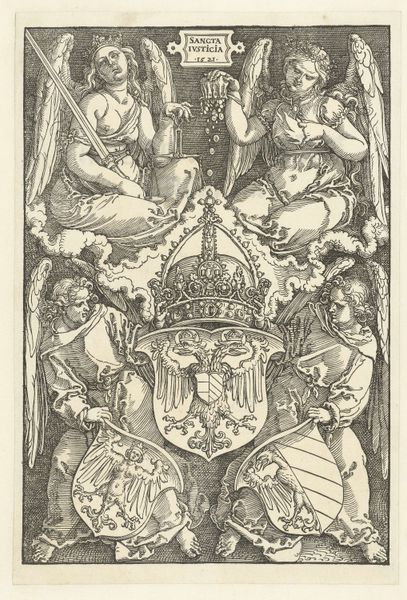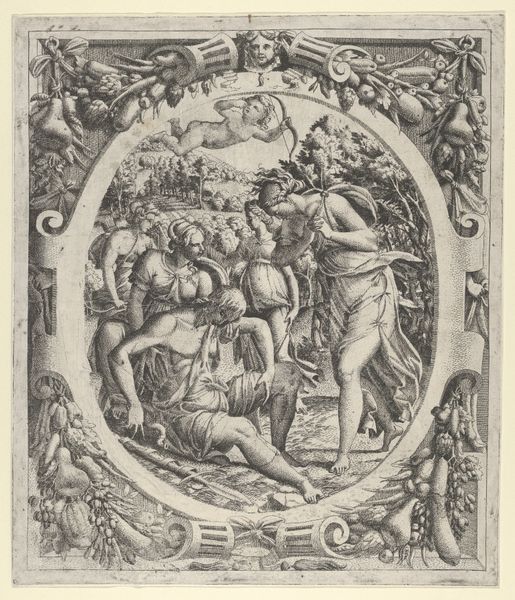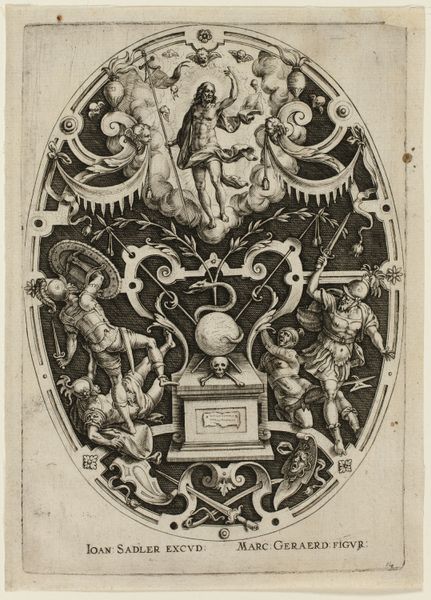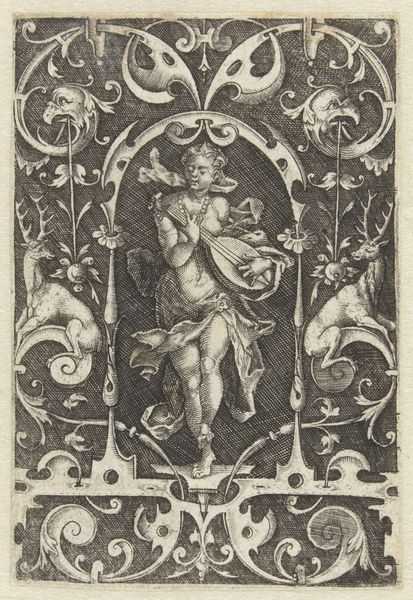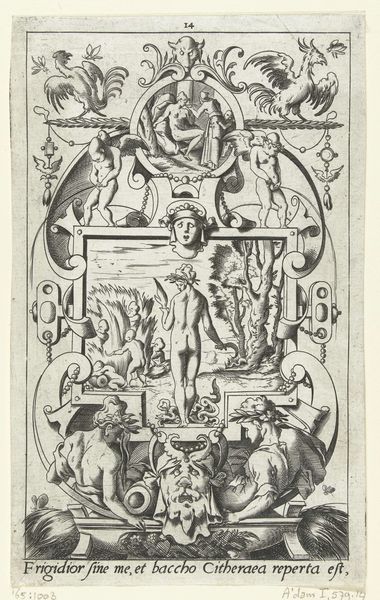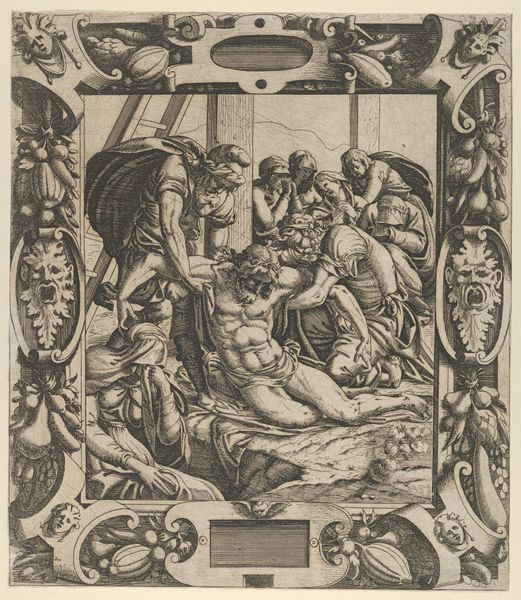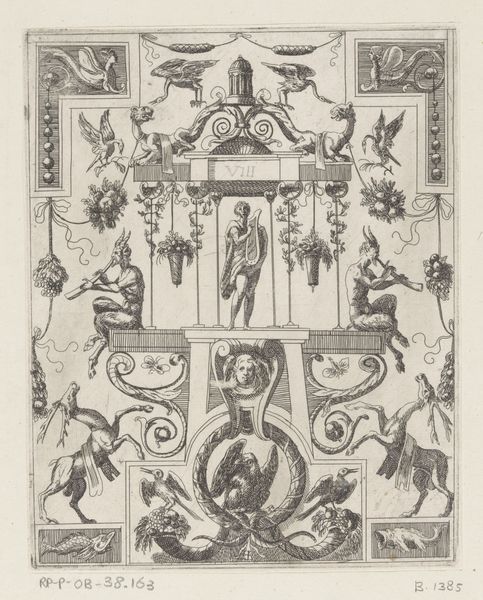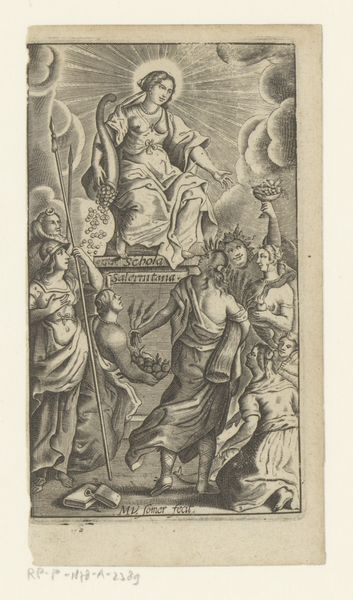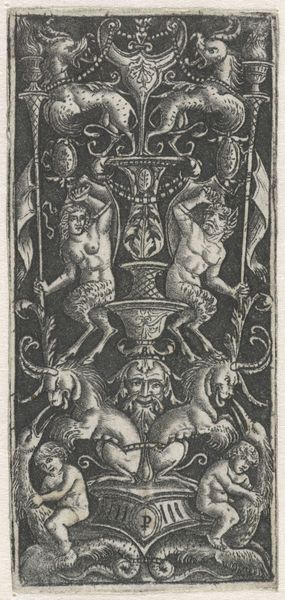
print, intaglio, engraving
#
allegory
#
baroque
# print
#
intaglio
#
figuration
#
history-painting
#
nude
#
engraving
Dimensions: height 136 mm, width 62 mm
Copyright: Rijks Museum: Open Domain
Editor: Here we have an intaglio print titled "Susanna and the Elders," created sometime between 1631 and 1699. It’s by an anonymous artist and is currently housed at the Rijksmuseum. I'm struck by the density of the composition – the story seems almost overwhelmed by the ornate, decorative elements. What are your thoughts on this piece? Curator: For me, this work is less about the immediate drama of Susanna's story, and more about the cultural and material conditions that made such a print possible and desirable. Intaglio, specifically engraving, was a skilled labor, a means of reproducing and distributing imagery to a growing consumer market. Think about the choices involved in translating this story into a reproducible format. Editor: Choices like... emphasizing certain details of the story over others? Curator: Exactly. The level of detail achieved through engraving suggests a patron or buyer who valued technical skill and refinement. What does the inclusion of the "nude" detail communicate within that marketplace? Is this object purely decorative, didactic, or something more complicated involving cultural power dynamics of the time? Editor: So, it’s not just about the biblical narrative, but about the economics and social implications of image production at that time? Curator: Precisely. Consider the engraver’s labor, the paper used, the ink. Who would own such an object? How would it be displayed and viewed? These are all material considerations that shift our understanding away from simply appreciating a beautiful picture. Editor: That makes me consider prints from a totally different angle; not just the art itself, but as commodities shaped by production. Thank you! Curator: And I'm reminded how crucial it is to analyze how artistic techniques serve specific cultural and historical functions beyond the aesthetic!
Comments
No comments
Be the first to comment and join the conversation on the ultimate creative platform.

